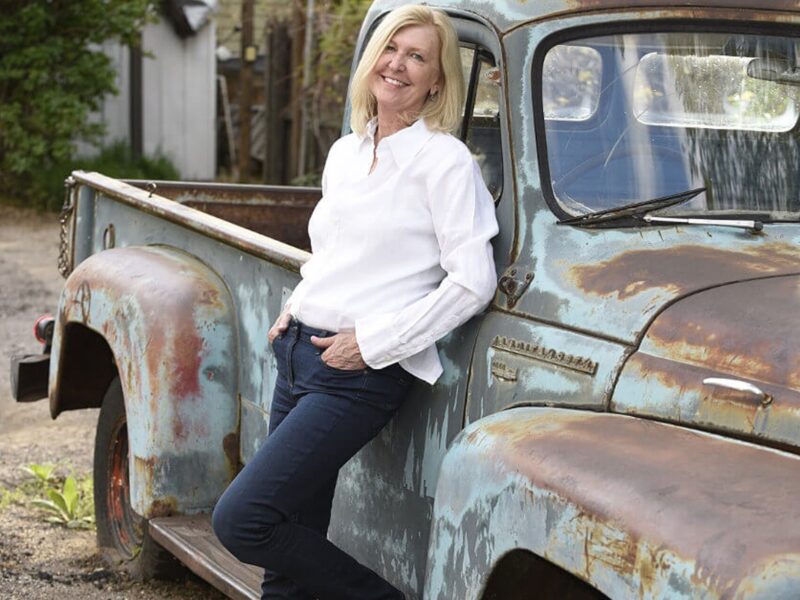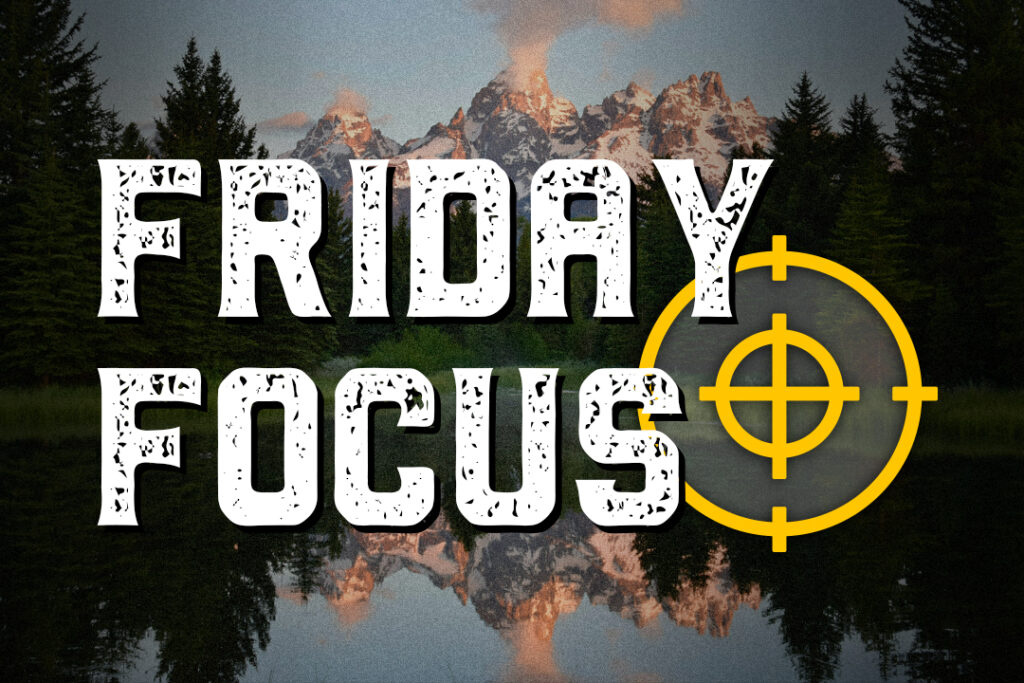FRIDAY FOCUS: Ernest Hemingway in Wyoming
Sheridan native explores the author’s little-known time in and around the Bighorns
- Published In: Other News & Features
- Last Updated: Jul 21, 2023

Sheridan native Darla Worden is the author of “Cockeyed Happy: Ernest Hemingway’s Wyoming Summers with Pauline," which was released in paperback in January. Set in the Bighorn Mountains area, the book focuses on six summers Hemingway and his second wife, Vogue editor Pauline Pfeiffer, spent there between 1928 and 1939.(Courtesy photo from Povy Kendal Atchison)

By Bob Wooley
Special to the Wyoming Truth
Storyteller.
Scroll through Instagram or any social media platform these days, and you’ll see the title thrown around a lot. But to author and magazine editor Darla Worden, telling stories has been a lifelong calling.
Born and raised in Sheridan, Worden was bitten by the writing bug at a young age. When a high school teacher introduced her to the works of Ernest Hemingway, it took her love of reading and desire to write to another level.
“Hemingway’s work felt familiar. Growing up in Wyoming, I could relate to the hunting and fishing,” she said. “Some of the stories reminded me of my dad and my uncles. So that set me on a path of being curious about Ernest Hemingway and his writing.”
Worden’s family ties to the Bighorn Mountains area go back for generations. Her grandparents were homesteaders — one side in nearby Clearmont and the other in Decker, Montana. And though she makes her home in Colorado these days, where she is editor-in-chief of Mountain Living and Colorado Homes & Lifestyles magazines, the connection to her native Wyoming is still rock solid.
In “Cockeyed Happy: Ernest Hemingway’s Wyoming Summers with Pauline,”Worden examines the time Hemingway and his second wife, Vogue editor Pauline Pfeiffer, spent fishing, hunting, living on ranches and ultimately seeing their marriage fade. The book, set in the Bighorn Mountains area, focuses on six summers the couple spent there between 1928 and 1939.
The Wyoming Truth recently spoke with Worden about “Cockeyed Happy,” which was released in paperback in January, as well as her childhood, a second Hemingway book she’s writing and why this legendary, but complicated writer’s life is still worth reading about 62 years after his death. Below are excerpts from the conversation.
Aside from writing books and editing magazines, you founded the Left Bank Writer’s Retreat in Paris for writers of poetry, fiction, nonfiction, memoir, drama or really any type of writing. What made you decide to start it?
Worden: As I was working my way through Hemingway’s body of work, I came to “A Moveable Feast.” I loved the Paris setting. I thought — looking at him as a model writer — I needed to travel the world and experience things. So I ended up going to Paris and loved it. And I returned years later — I was there for a month — and decided that I would start a writer’s retreat there, showing other writers things like his neighborhood.
It was during that time that I discovered that he had actually been in Sheridan, and I started digging and fell down that rabbit hole of research and that’s how “Cockeyed Happy”came to be.
That’s a good segue. Let’s talk about “Cockeyed Happy.” Why did you write about this little-known period in Hemingway’s life?
Worden: I wanted to write a story about a man who had written one of my favorite books — “A Moveable Feast” — a beautiful book but also a sad book because his first marriage was falling apart. And I just wanted to write a story of a man who was a great writer, who came to Wyoming. And no one had ever written a book about his time in Wyoming before.
He went to Sheridan, Bighorn Mountains — over the top to Cody — and then spent a good chunk of time in Wyoming up by the Montana border. And I’ve had a lot of great feedback about the scenery and setting I wrote. And Hemingway always said that if you don’t have setting, you don’t have anything. And because I love that land so much — I feel like it’s in my blood — I loved writing that part of the book.
In researching the book, what surprised or interested you?
Worden: The fact that Hemingway was in Sheridan during prohibition was interesting to me personally.
Hemingway got his booze from a number of places. He had bootleggers who made wine. But he also met a street sweeper on Main Street, who would keep a canister of booze in his trash can, along with horse manure that he swept up off of the street. So you would go make a contact with him, and he’d reach in and pull out the can and give it to you [to drink from]. What’s funny about this to me is that some of my high school classmates were possibly the grandchildren or great grandchildren of one of those bootleggers.
I wanted to mention something about The Mint Bar, which you just wrote about. Hemingway played poker there with the local newspaper editor, and that’s who connected him to the bootleggers in the area.
Right now, you’re writing a second book about Hemingway. This one covers more of who he was near the end of his life. Like many men of his generation, he had a way of behaving and a belief system — often reflected in his writing — that could be considered problematic in 2023. Do you ever get pushback for writing about him?
Worden: It’s complicated. You could really take issue with almost any writer of that time.
One time I was giving a reading in Sheridan and a woman came up to me afterwards and asked how I could write about Hemingway in today’s time of the #MeToo movement. And my response was that Ernest Hemingway was a cad. And his problem, as his ex-wives would have told you, was that he felt he had to marry every woman he fell in love with, instead of just having an affair with them. He was a serial marry-er who never accosted a woman. Women would line up around the block to try to shake his hand.
The other issues — race and the homophobic comments that he made — weren’t a part of my research. But I feel like any author, any actor, any movie — you’re going to have people who are fans and people who are not fans.
I’ve come to terms with the fact that he was a flawed human being, like so many of us are. And some of what he wrote, especially near the end of his life where he’s really deteriorated and all of those years of hard living are taking a toll on him, sometimes I read what he said and it’s cringeworthy. But then there are these moments of beauty where you see the human side.
In the last few years, there’s been a renewed interest in the American West, time spent outdoors and travel. People are seeking more experiential rewards in life.
Hemingway’s life and books embodied many of those qualities. Will it lead new readers to engage with his work?
Worden: I feel like he was left with a bad image in peoples’ minds as a crazed, alcoholic writer at the end. And that isn’t actually what happened. So I’m hoping that maybe my new book will shed some empathy on the man that some people hold in poor esteem just because of this image that’s out there.
There was a time when it was unpopular for people — even writers — to like Hemingway. But it ebbs and flows. People get cancelled and then they come back.













